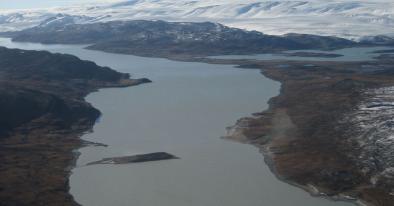Science Source
Melting glaciers stimulate large summer phytoplankton blooms in southwest Greenland waters
- Shows that the arrival of freshwater discharge from outlet glaciers from both southeast and southwest GrIS coincides with large‐scale blooms in the Labrador Sea that extend over 300 km from the coast during summer
- States that this summer bloom develops about a week after the arrival of glacial meltwater in early July and persists until the input of glacial meltwater slows in August or September, accounting for ~40% of annual net primary production for the area
- Suggests that—in view of the absence of a significant change in the depth of the mixed layer associated with the arrival of glacial meltwater to the Labrador Sea—the increase in phytoplankton biomass and productivity in summer is likely driven by a greater nutrient supply (most likely iron)
- The results highlight that the ecological impact of meltwater from the GrIS likely extends far beyond the boundaries of the local fjords, encompassing much of the eastern Labrador Sea
- Concludes that such impacts may increase if melting of the GrIS accelerates as predicted
Related Content
Science Source
| Geophysical Research Letters
Ice Core Records of West Greenland Melt and Climate Forcing
K. A. Graeter, E. C. Osterberg, D. G. Ferris et al
Science Source
| Science Advances
Abrupt shift in the observed runoff from the southwestern Greenland ice sheet
Andreas P. Ahlstrøm, Dorthe Petersen, Peter L. Langen et al
Headline

Dec 15, 2017 | Vox
Greenland's ice sheet is driving global sea level rise. One section is melting 80% faster.
Science Source
| Science Advances
Should coastal planners have concern over where land ice is melting?
Eric Larour, Erik R. Ivins, Surendra Adhikari


